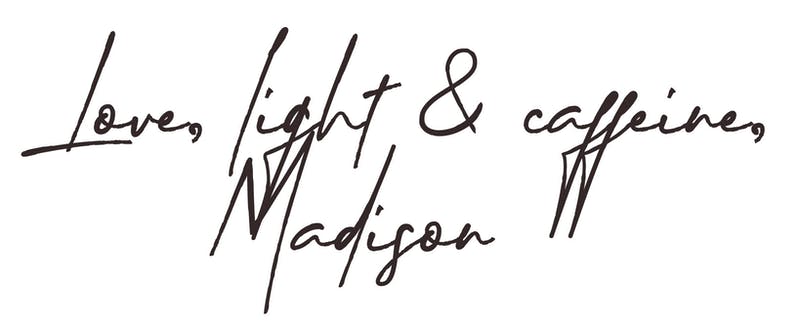I know it has been quite some time, but life happens and between work and the effects of the global pandemic, time [still] waits for no one. In case you missed it, I have a fabulous DIY for you here, for beauty enthusiasts and DIY lovers. It does take patience but definitely worth it if you’re interested in learning more about serums and ancient oils.

Let’s start with a few things, as I mentioned here, this ancient oil collection might be one of my favourites thus far. It includes a variety of six oils — some that are quite rare to find — that have been used since biblical times. Ancient oils and resins such as Frankincense, Cistus, Galbanum, Hyssop, Myrrh, and Common Myrtle.
I have talked about Myrrh (Commiphora Myrrha) in the past because it is one of my favourite ancient oil resins aside from frankincense. The aroma is herbaceous, woody, smoky and hot; there are also subtle semi-sweet notes. it's derived from the gummy resin of the small Myrrh tree.
The power of myrrh is so vast, that it can soothe the mouth and throat, improve complexion, and aid in healthy gums in toothpaste or used in a mouth rinse. I like to use it in my moisturiser after a bath. It's also a great pain reliever.

Common Myrtle (Myrtus) - Topical use.
Also known as Corsican pepper, common myrtle has been used as early as 600 B.C., biblically used in purification ceremonies, and for thousands of years with significant symbolism of benevolence, honour, love, and felicity.
The cleansing scent is refreshing and gives an uplifting sense in environments, so using this oil in a foot soak or bath would be soothing. It has a strong camphoraceous yet fresh aroma that is also herbaceous with subtle spicy notes. Common myrtle is easy to diffuse to stimulate the atmosphere. To alleviate stress, add a drop or two to the palms of your hand and deeply inhale during deep breathing sessions.

Frankincense (Boswellia carterii (Somaliland), Boswellia sacra (Oman), Boswellia papyrifera (Somaliland, Boswellia frereana (Ethiopia)
Even today, we are only beginning to understand the full uses of frankincense, from supporting cellular function and immunity-boosting properties to skincare. Egyptians used it for centuries, from rejuvenating the skin to perfume, and used it in salves, which has contributed to how we now use this ancient oil today. It is revered as the king of oils due to its mighty health and beautifying benefits. Assyrians and Babylonians burned it in religious ceremonies.
My parents would burn the resin tears and it would fill up the room. It’s a comforting scent that I remember well from my childhood, like Myrrh.
This unique multi-blend of frankincense varieties shown here has a clean, warm and pleasing fragrance that is distinct, there are spicy notes in the scent as well. Frankincense, like Myrrh, has great skincare benefits and can be used to alleviate pain as well as heal scarring, and for a healthier complexion. Add a drop or two to your facial cream or facial massage is all you need.
Cistus (Cistus ladaniferus) - Topical use.
This rapidly growing perennial shrub grows on rocky soil, it's also known as Labdanum or Rock Rose — also called Rose of Sharon and was used in Biblical times for incense and perfumery. This is a deep and beautiful fragrance that has an almost cherry-almond aroma that is sweet and warming.
Cistus has paper-thin rose-like flowers that only last one day with no fragrance, the oil is actually from the resinous branches and leaves. Cistus is excellent for calming the mind and body; use it in meditation sessions. It also has cleansing properties naturally and can be added to household cleaning products.

Galbanum (Ferula galbaniflua) - Topical use.
Galbanum is related to caraway and fennel, and is part of the carrot family — it's a tall and bushy plant with small flowers and lustrous leaves. The gum resin from the plant is released when the smooth stems are cut. It has a distinctly woodsy scent that is earthy and green, almost sharp and pine-like with a slight cedary scent.
In ancient times Roman and Greek beauty products used galbanum in them as well as in balms, even today many wellness remedies and beauty use, including men's grooming or skincare can benefit from using this essential oil. Even the “Father of Medicine” himself, Hippocrates, used it for wellness!

Hyssop (Hyssopus officinalis) - Topical use.
Regarded as a sacred herb by the Hebrews and Greeks, hyssop was significantly mentioned and used in the Old Testament and is actually known as one of the oldest herbs used by humans. Hyssop is in the mint family and comparably has a clean sharp aroma, but with soft floral notes, and a camphoraceous aroma — it brings peace and clarity to an environment. Unsurprisingly, it has been used to cleanse surfaces, and the air, and DIY cleaners.
Hyssop can be used for cleansing surfaces, from polishing wood to using it to clean hands and wrists when outdoors.
Sign-up for my newsletter and get excited about new content, exclusive recipes, free downloads, and updates. I am also starting a special series later only for subscribers, we will cover wellness and exciting foodie culture, including ancient healing techniques, and more. Make sure to sign-up to get on the list before the new session arrives in your inbox.

The goods: The Ancient Oils Collection-Provided via dōTERRA, a FASHION TALES media blog partner. Shop the collection here. All opinions are honestly expressed and are my own. Other Refs. (1)-Galbanum, (2)-Hyssop, (3) Cistus, (4) Common Myrtle. Learn more about Frankincense, (5) Myrrh & (6)
Remember, essential oils are highly concentrated, and not to be internally, especially in high doses without proper research and an experienced herbalist, or consent from a physician. It is important to understand alternative methods and holistic healing elements are not for everyone but are natural ways of promoting health and wellness.









